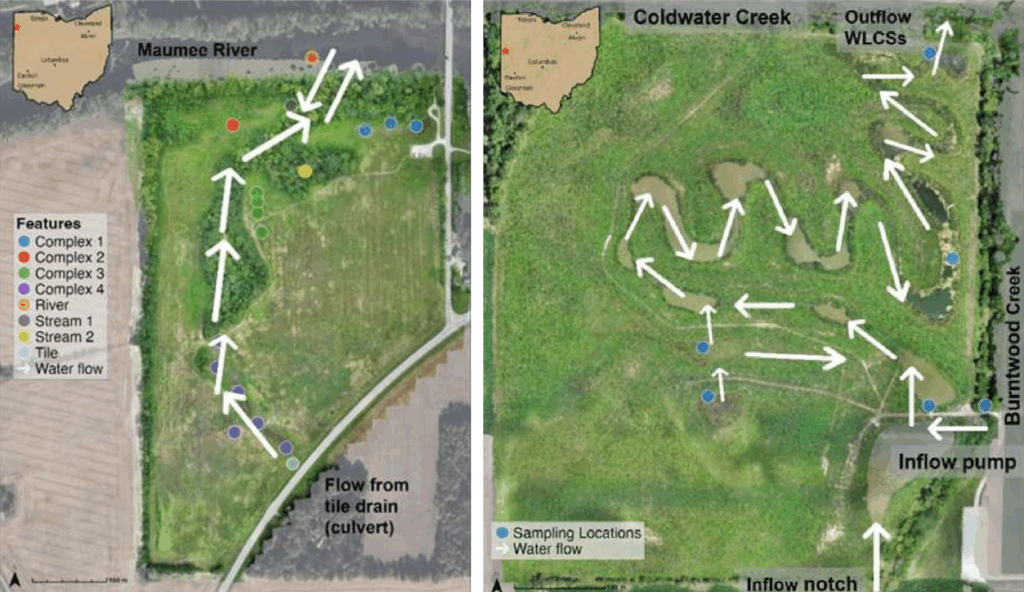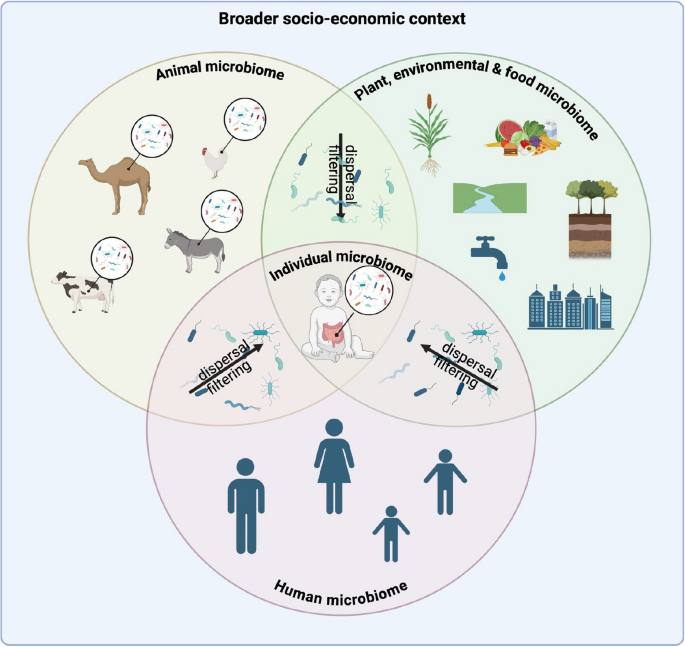Global Forest Status Report: A Contradiction in Progress Towards Sustainable Development Goals
Executive Summary
- Significant tropical forest regeneration is occurring, with over 11 million hectares in regrowth between 2015 and 2021, particularly in Latin America and Asia.
- This regeneration is nullified by persistently high deforestation rates, which stood at approximately 8.1 million hectares in 2024.
- Global efforts are severely off track to meet the 2030 zero-deforestation pledge, a critical target for achieving Sustainable Development Goal 15 (Life on Land).
- Primary drivers of deforestation, including agriculture and climate-related events like fires and drought, directly undermine SDG 13 (Climate Action) and conflict with the aims of SDG 2 (Zero Hunger).
- A major financial imbalance persists, with subsidies for industrial agriculture vastly exceeding funding for forest conservation, indicating a failure to mobilize partnerships and resources as outlined in SDG 17 (Partnerships for the Goals).
Detailed Analysis of Forest Cover Change and SDG 15 (Life on Land)
Contradictory Trends: Regeneration vs. Deforestation
- Data from the Forest Declaration Assessment 2025 indicates that while millions of hectares are regenerating, this regrowth is a direct consequence of prior destruction.
- The annual deforestation rate remains static, demonstrating that the cycle of loss and temporary regrowth fails to advance Target 15.2, which calls for halting deforestation and restoring degraded forests.
- More than half of the 51 million hectares that have regenerated since 1990 are located in zones of high deforestation pressure, rendering these gains precarious.
Impact on Primary Forests and Biodiversity
- Primary forests, which are critical for biodiversity and carbon storage, are disappearing fastest. Approximately 6.7 million hectares were lost in 2024 alone.
- Tree-cover loss within Key Biodiversity Areas rose by 47% from 2023, a direct contravention of Target 15.5, which mandates urgent action to reduce the degradation of natural habitats and halt biodiversity loss.
- The loss of these irreplaceable ecosystems represents a significant and potentially irreversible setback for global biodiversity goals.
Climate Implications and Setbacks for SDG 13 (Climate Action)
Forests as a Carbon Source
- The destruction of primary forests in 2024 released an estimated 3.1 billion metric tons of carbon dioxide equivalents, an amount 150% greater than the annual emissions of the U.S. energy sector.
- This trend transforms vital carbon sinks into major sources of greenhouse gases, directly undermining global climate mitigation efforts central to SDG 13.
- Climate events, such as the 2023-24 El Niño, exacerbated the issue, with forest fires in regions like the Amazon emitting more greenhouse gases than some industrialized nations.
Economic Drivers and Financial Disparities Affecting SDGs
The Role of Agriculture and SDG 2 (Zero Hunger)
- Agriculture remains the dominant driver of deforestation, accounting for 86% of the global total.
- This highlights a fundamental conflict between current agricultural expansion models and the objective of sustainable food systems as outlined in Target 2.4.
- The expansion of cattle pasture and plantations for commodities like palm oil and rubber continues despite corporate pledges, linking deforestation to global supply chains and the principles of SDG 12 (Responsible Consumption and Production).
Financial Imbalance and SDG 17 (Partnerships for the Goals)
- Public finance for forest protection and restoration averages only $5.9 billion annually.
- This figure is dwarfed by the estimated $409 billion in annual subsidies that support large-scale industrial agriculture, which often drives deforestation.
- An estimated $117–$299 billion is required annually to meet 2030 targets, revealing a critical failure in financial commitments and global partnerships under SDG 17.
Conclusion: An Unstable Equilibrium Threatening Global Goals
The current state of global forests is one of precarious oscillation, not recovery. Gains from regeneration are ecologically superficial when compared to the profound loss of mature, biodiverse primary forests. Achieving the Sustainable Development Goals, particularly SDG 13 and SDG 15, requires a paradigm shift that addresses the economic drivers of deforestation and aligns financial incentives with conservation.
Recommendations
- Redirect perverse subsidies from destructive industrial agriculture towards sustainable land management and forest conservation to align with SDG 2 and SDG 15.
- Strengthen global partnerships under SDG 17 to close the significant funding gap for forest protection and restoration.
- Implement and enforce robust policies to halt the clearing of primary forests and protect Key Biodiversity Areas.
- Prioritize the protection of naturally regenerating secondary forests as a critical, cost-effective strategy for climate mitigation (SDG 13) and biodiversity recovery.
Analysis of Sustainable Development Goals in the Article
-
Which SDGs are addressed or connected to the issues highlighted in the article?
The article primarily addresses issues related to the following Sustainable Development Goals (SDGs):
- SDG 15: Life on Land
This is the most central SDG to the article. The text is entirely focused on the state of global forests, discussing the dual trends of deforestation and natural regeneration. It covers the protection, restoration, and sustainable use of terrestrial ecosystems, specifically forests. The article highlights the failure to halt deforestation, the loss of primary forests rich in biodiversity, and the degradation of land due to fires and agricultural expansion. - SDG 13: Climate Action
The article directly connects forest loss to climate change. It quantifies the carbon emissions resulting from deforestation, stating that the loss of primary forests in 2024 released “3.1 billion metric tons of carbon dioxide equivalents.” It also describes how forest fires in the Amazon turned “one of Earth’s greatest carbon stores into a source of emissions.” The role of forests in sequestering carbon is also mentioned, emphasizing that young secondary forests “can rapidly sequester carbon.” - SDG 2: Zero Hunger
The article identifies agriculture as the main driver of deforestation. It states that agriculture is “responsible for 86% of global deforestation over the past decade,” citing examples like “cattle pasture in Latin America to oil-palm and rubber plantations in Southeast Asia.” This links the goal of achieving food security with the need for sustainable agricultural practices that do not destroy vital ecosystems, touching upon the sustainability aspect of food production systems.
- SDG 15: Life on Land
-
What specific targets under those SDGs can be identified based on the article’s content?
Based on the article’s content, several specific SDG targets can be identified:
- Target 15.2: By 2020, promote the implementation of sustainable management of all types of forests, halt deforestation, restore degraded forests and substantially increase afforestation and reforestation globally.
The article is centered on this target, particularly the goal to “halt and reverse forest loss by 2030.” It explicitly states that the world is “63% off track from the trajectory needed to reach the pledge of ‘zero deforestation by 2030’,” demonstrating a clear failure to meet this target. The discussion of forest regeneration (“More than 11 million hectares of tropical moist forest… were in some stage of natural regrowth”) also directly relates to the reforestation aspect of this target. - Target 15.5: Take urgent and significant action to reduce the degradation of natural habitats, halt the loss of biodiversity and, by 2020, protect and prevent the extinction of threatened species.
The article highlights the loss of the most biodiverse forests, noting that “Primary forests, rich in carbon and biodiversity, are disappearing fastest.” It further specifies that in tropical biodiversity hotspots, “tree-cover loss within Key Biodiversity Areas rose 47% from 2023,” directly addressing the degradation of critical habitats and the resulting threat to biodiversity. - Target 13.2: Integrate climate change measures into national policies, strategies and planning.
The failure to meet deforestation pledges, as detailed in the article, represents a failure to integrate a key climate change measure into policy and action. The article notes that forest fires “emitted more greenhouse gases than some industrialized nations,” underscoring the massive climate impact of not managing forest ecosystems sustainably. - Target 2.4: By 2030, ensure sustainable food production systems and implement resilient agricultural practices… that help maintain ecosystems…
The article’s finding that “agriculture, responsible for 86% of global deforestation,” shows that current food production systems are in direct conflict with the goal of maintaining ecosystems. The mention of “subsidies for industrial farming” dwarfing funds for forest protection points to economic systems that promote unsustainable, rather than sustainable, agricultural practices. - Target 15.b: Mobilize and significantly increase financial resources from all sources to conserve and sustainably use forests and biodiversity.
The article directly addresses this financial target by contrasting the inadequate funding for conservation with the vast sums supporting destructive industries. It states, “Public finance for forest protection and restoration averaged just $5.9 billion a year—compared with the $409 billion in annual subsidies supporting large-scale industrial agriculture.” This highlights the significant financial gap in achieving sustainable forest management.
- Target 15.2: By 2020, promote the implementation of sustainable management of all types of forests, halt deforestation, restore degraded forests and substantially increase afforestation and reforestation globally.
-
Are there any indicators mentioned or implied in the article that can be used to measure progress towards the identified targets?
Yes, the article provides several quantitative and qualitative indicators that can be used to measure progress:
- Indicator for Target 15.2 (Progress towards sustainable forest management):
- Annual rate of deforestation: The article provides precise figures, stating that “in 2024 roughly 8.1 million hectares of forest were cleared worldwide.” It compares this to the target trajectory, which “should have fallen to 5 million hectares a year by 2024.” This serves as a direct indicator of progress (or lack thereof).
- Annual rate of forest regeneration: The article mentions that “More than 11 million hectares of tropical moist forest… were in some stage of natural regrowth between 2015 and 2021,” providing a metric for restoration efforts.
- Indicator for Target 15.5 (Loss of biodiversity):
- Rate of primary forest loss: The article specifies that “Some 6.7 million hectares [of primary forests] were lost in 2024.” This is a key indicator for biodiversity loss, as these forests are critical habitats.
- Rate of tree-cover loss in Key Biodiversity Areas (KBAs): The article explicitly states that “tree-cover loss within Key Biodiversity Areas rose 47% from 2023,” serving as a direct indicator of threats to the most important sites for global biodiversity.
- Indicator for Target 13.2 (Climate impact):
- Greenhouse gas emissions from deforestation: The article quantifies this impact, stating that the loss of primary forests in 2024 released “3.1 billion metric tons of carbon dioxide equivalents.” This is a direct measure of the climate consequences of failing to protect forests.
- Indicator for Target 15.b (Financial flows):
- Public finance for forest protection: The article provides a clear figure: “$5.9 billion a year.” This measures the financial commitment to conservation.
- Subsidies for potentially harmful industries: The article contrasts the conservation funding with the “$409 billion in annual subsidies supporting large-scale industrial agriculture,” an indicator of financial flows that run counter to sustainability goals.
- Indicator for Target 15.2 (Progress towards sustainable forest management):
Summary of SDGs, Targets, and Indicators
| SDGs | Targets | Indicators Identified in the Article |
|---|---|---|
| SDG 15: Life on Land | 15.2: Halt deforestation and restore degraded forests. |
|
| SDG 15: Life on Land | 15.5: Reduce the degradation of natural habitats and halt biodiversity loss. |
|
| SDG 13: Climate Action | 13.2: Integrate climate change measures into policies and planning. |
|
| SDG 2: Zero Hunger | 2.4: Ensure sustainable food production systems that maintain ecosystems. |
|
| SDG 15: Life on Land | 15.b: Mobilize financial resources for sustainable forest management. |
|
Source: news.mongabay.com






